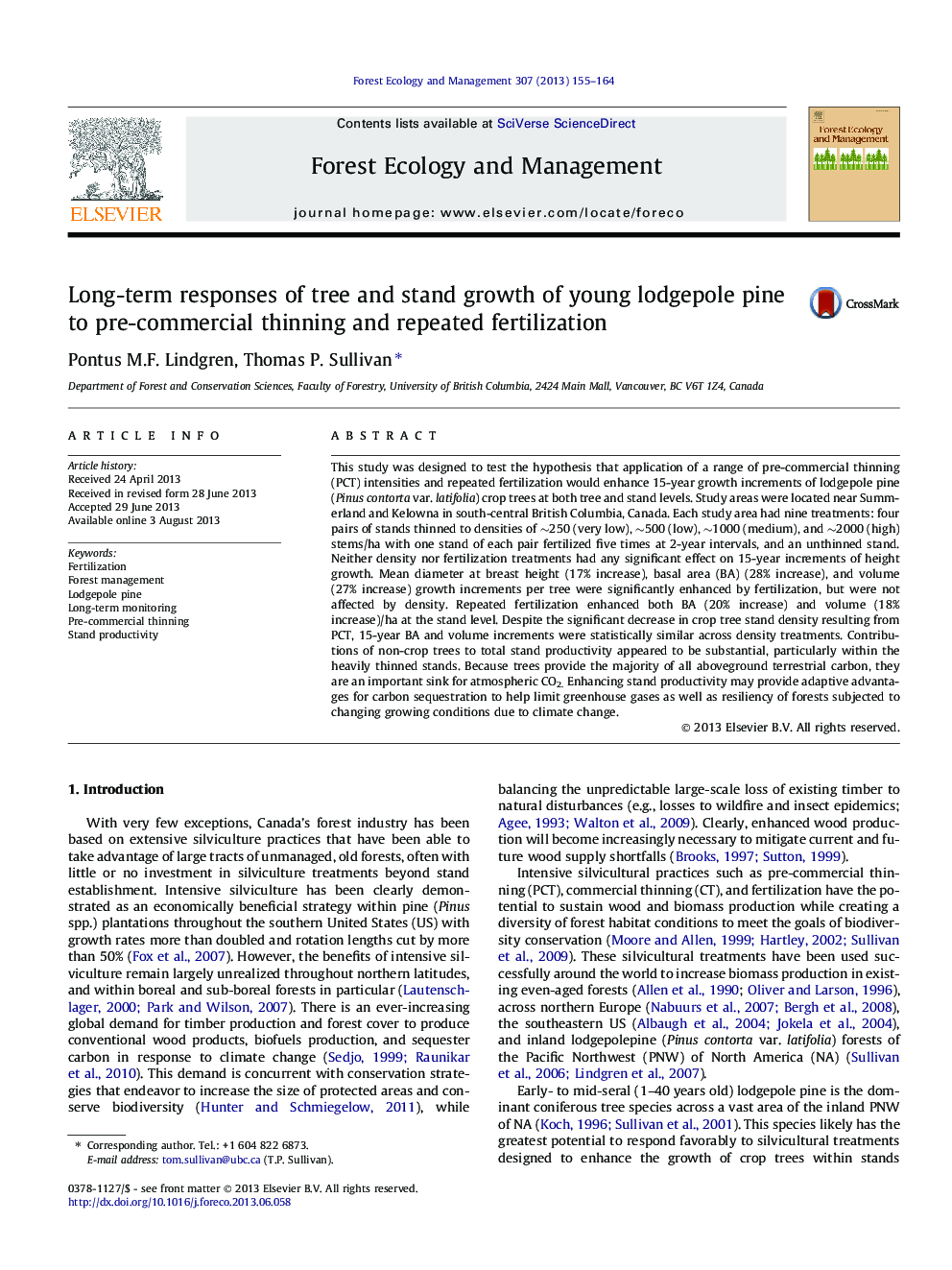| Article ID | Journal | Published Year | Pages | File Type |
|---|---|---|---|---|
| 6544046 | Forest Ecology and Management | 2013 | 10 Pages |
Abstract
This study was designed to test the hypothesis that application of a range of pre-commercial thinning (PCT) intensities and repeated fertilization would enhance 15-year growth increments of lodgepole pine (Pinus contorta var. latifolia) crop trees at both tree and stand levels. Study areas were located near Summerland and Kelowna in south-central British Columbia, Canada. Each study area had nine treatments: four pairs of stands thinned to densities of â¼250 (very low), â¼500 (low), â¼1000 (medium), and â¼2000 (high) stems/ha with one stand of each pair fertilized five times at 2-year intervals, and an unthinned stand. Neither density nor fertilization treatments had any significant effect on 15-year increments of height growth. Mean diameter at breast height (17% increase), basal area (BA) (28% increase), and volume (27% increase) growth increments per tree were significantly enhanced by fertilization, but were not affected by density. Repeated fertilization enhanced both BA (20% increase) and volume (18% increase)/ha at the stand level. Despite the significant decrease in crop tree stand density resulting from PCT, 15-year BA and volume increments were statistically similar across density treatments. Contributions of non-crop trees to total stand productivity appeared to be substantial, particularly within the heavily thinned stands. Because trees provide the majority of all aboveground terrestrial carbon, they are an important sink for atmospheric CO2. Enhancing stand productivity may provide adaptive advantages for carbon sequestration to help limit greenhouse gases as well as resiliency of forests subjected to changing growing conditions due to climate change.
Keywords
Related Topics
Life Sciences
Agricultural and Biological Sciences
Ecology, Evolution, Behavior and Systematics
Authors
Pontus M.F. Lindgren, Thomas P. Sullivan,
